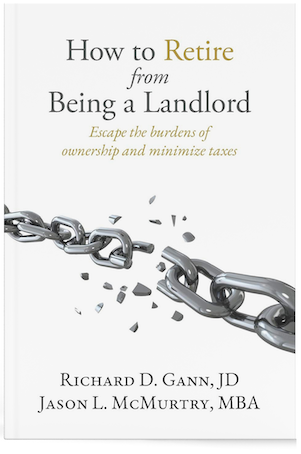
Is Student Housing Ready to Bounce Back?
Is Student Housing Ready to Bounce Back?
At the beginning of the pandemic, most real estate investors were anxious to see how COVID-19 would affect business. One sector in particular that was closely monitored was student housing. Off-campus housing property owners and managers not only had to comply with each states’ guidelines, but had to adapt accordingly to colleges and universities’ varying responses.
Investments into student housing had dropped 12% compared to pre-crisis levels and some estimates expected mixed results this fall.[1]
However, while student housing was not immune to the impacts from COVID, the sector has presented several recession-resistant traits since March 2020. Student housing’s resiliency has shown it was able to keep pace with the traditional rental housing industry.[2]
Student housing nationwide experienced only a 3% decline for Academic Year 2020-2021, which was recaptured and then some during the Academic Year 2021-2022. Collections were high, and actually outpaced traditional multifamily (which most industry observers agree was a stand-out from a pandemic performance perspective) by 200 to 300 basis points.[3]
Why was this? According to a recent study from Pierce Education Properties, COVID-19 and Student Housing – Myths and Realities, “The method of course delivery had almost no impact on occupancy of off-campus housing, as students demonstrated a high propensity to return to college irrespective of course delivery method.”
Although this year began with a surge in COVID cases, the sector’s prospects are still promising, and investors are taking note.
Blackstone, the world’s largest real estate company, formed a $784 million joint venture with Landmark Properties to invest in eight student housing properties totaling 5,416 beds across the U.S. Encouraged by the ongoing favorable macro trends in the sector, Brookfield partnered with Scion to acquire a U.S. student housing portfolio of 27 properties with more than 17,000 beds in close proximity to large, public universities.[4]
JLL senior director Stewart Hayes noted in a recent GlobeSt.com article that some of the new entrants are conventional multifamily investors and some are experienced commercial real estate investors who have historically focused on other product types but, because of how resilient student housing has proven to be historically, see this as an opportunity to invest.
Demographics are certainly favorable for the sector, and the institutional student housing market is poised to remain a steady option for real estate investors. In total, the U.S. student housing market across is expected to expand to 9.2 million beds by 2031, as opposed to its current 8.5 million beds. This is an average annual increase of 0.8 percent.[5]
The sector did experience a flight to quality during the pandemic and investors were focused on core assets at Tier I universities. And while most markets recovered well as students returned to campuses, investors should continue to pay increased attention to the location of a student housing community and focus on markets in which there is a substantial growing student body and where the property is located in close proximity to the campus.
For apartment owners who are interested in participating in the growing demand for all types of multi-housing properties, but are ready to retire from being a landlord, there are passive real estate investments that may allow investors an ability to move from an active to a passive role of real estate ownership on a tax-deferred basis.
For more information about passive real estate investments, please call 1031 Capital Solutions at 1-800-445-5908 or visit our website, 1031capitalsolutions.com.
_____________________
Because investors situations and objectives vary this information is not intended to indicate suitability for any particular investor.
This is for informational purposes only, does not constitute individual investment advice, and should not be relied upon as tax or legal advice. Please consult the appropriate professional regarding your individual circumstance. IRC Section 1031, IRC Section 1033 and IRC Section 721 are complex tax concepts; therefore, you should consult your legal or tax professional regarding the specifics of your particular situation.
There are material risks associated with investing in DST properties and real estate securities including liquidity, tenant vacancies, general market conditions and competition, lack of operating history, interest rate risks, the risk of new supply coming to market and softening rental rates, general risks of owning/operating commercial and multifamily properties, short term leases associated with multi-family properties, financing risks, potential adverse tax consequences, general economic risks, development risks, long hold periods, and potential loss of the entire investment principal. The data contained in this material was obtained from third-party sources believed to be reliable; however, 1031 Capital Solutions, CIS, and CAM do not guarantee the accuracy of the information. Statements concerning financial market trends are based on current market conditions, which will fluctuate.
[1] GlobeSt.com, Multifamily Investors Look to Student Housing as an Attractive Alternative, Nov. 12, 2021 [2] National Apartment Association, Student Housing Holds Strong During Pandemic, Oct. 2021 [3] RE Journals.com, Surge in Demand Propels Student Housing, Oct. 6, 2021 [4] Multihousing News, Student Housing in 2022 – What the Experts Expect, Jan. 5, 2022 [5] The Registry SF, Student Housing Demand Expected to Increase over Ten Year Period, Nov. 1, 2021_____________________
Securities offered through Concorde Investment Services, LLC (CIS), member FINRA/SIPC. Advisory services offered through Concorde Asset Management, LLC (CAM), an SEC registered investment adviser. Insurance products offered through Concorde Insurance Agency, Inc. (CIA) 1031 Capital Solutions is independent of CIS, CAM and CIA.
continue reading
Related Posts
Since 2021, the Federal Reserve has aggressively raised interest rates […]
When the Federal Reserve (the Fed) adjusts its target interest […]
1031 Industry Veterans Launch Proprietary Software for Rental Housing Providers […]











